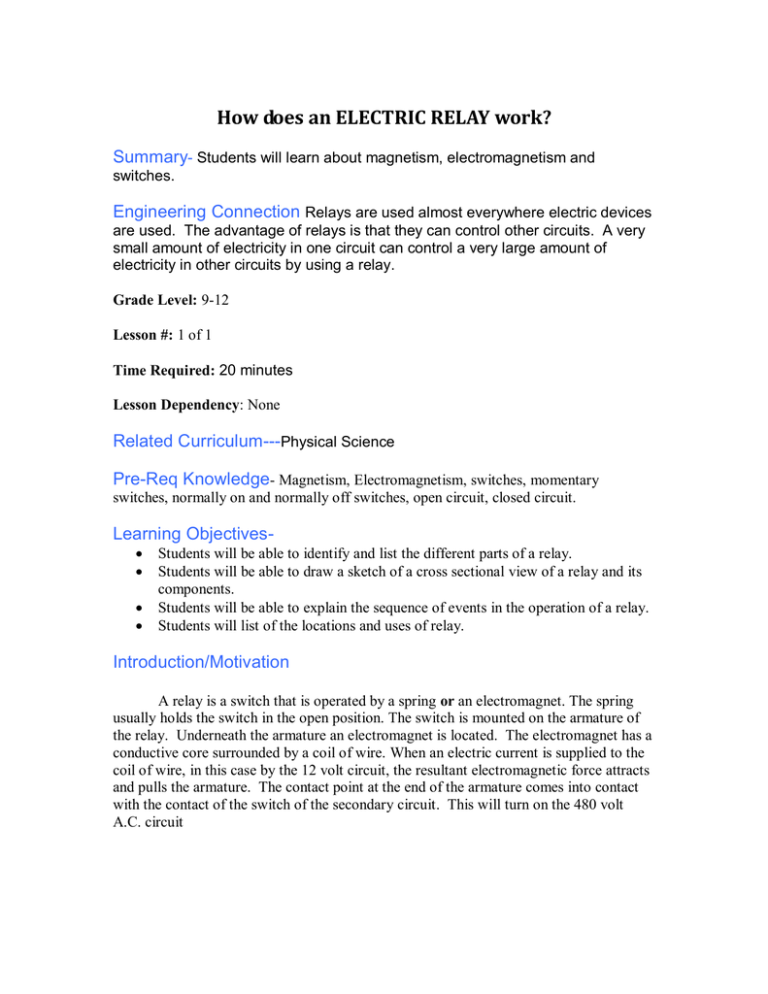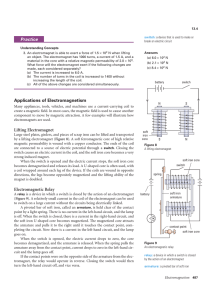How does an ELECTRIC RELAY work?
advertisement

How does an ELECTRIC RELAY work? Summary- Students will learn about magnetism, electromagnetism and switches. Engineering Connection Relays are used almost everywhere electric devices are used. The advantage of relays is that they can control other circuits. A very small amount of electricity in one circuit can control a very large amount of electricity in other circuits by using a relay. Grade Level: 9-12 Lesson #: 1 of 1 Time Required: 20 minutes Lesson Dependency: None Related Curriculum---Physical Science Pre-Req Knowledge- Magnetism, Electromagnetism, switches, momentary switches, normally on and normally off switches, open circuit, closed circuit. Learning Objectives Students will be able to identify and list the different parts of a relay. Students will be able to draw a sketch of a cross sectional view of a relay and its components. Students will be able to explain the sequence of events in the operation of a relay. Students will list of the locations and uses of relay. Introduction/Motivation A relay is a switch that is operated by a spring or an electromagnet. The spring usually holds the switch in the open position. The switch is mounted on the armature of the relay. Underneath the armature an electromagnet is located. The electromagnet has a conductive core surrounded by a coil of wire. When an electric current is supplied to the coil of wire, in this case by the 12 volt circuit, the resultant electromagnetic force attracts and pulls the armature. The contact point at the end of the armature comes into contact with the contact of the switch of the secondary circuit. This will turn on the 480 volt A.C. circuit Vocabulary/Definitions Electromagnet a coil of wire wrapped around a conductive core. Armature that can be attracted by the electromagnet Spring to keep the armature in a “home” or “normal’ position Set of electrical contacts for the secondary circuit Control Circuit connects to the coil of the electromagnet Secondary circuit usually a higher voltage and amperage demand than the control circuit Coil the wire wrapped around the conductive core of the electromagnet assembly Lesson Closure Show examples of relays garnered from the school auto shop, HVAC shop and others. Assessment a) Ask students to draw and label the parts of a relay b) Ask students to wire up a small relay using a battery and LEDs Lesson Extension Activities Using the Internet find examples of the use of relays in appliances, automobiles ad other equipment References http://en.wikipedia.org/wiki/Relay http://www.allaboutcircuits.com/vol_4/chpt_5/1.html


